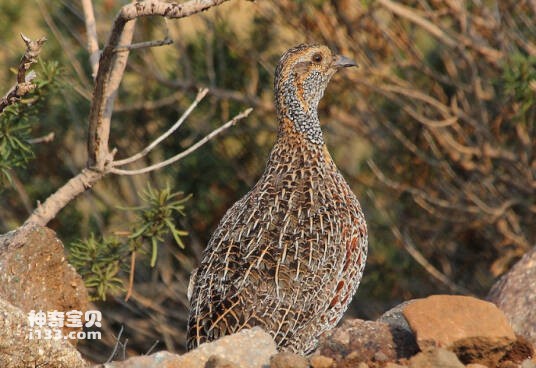Scleroptila levaillantii
IUCN
LCBasic Information
Scientific classification
- name:Scleroptila levaillantii
- Scientific Name:Scleroptila levaillantii,Red-winged Francolin
- Outline:Landfowl
- Family:Chickeniformes P.family R.Partridge
Vital signs
- length:About 38 cm
- Weight:354-515g
- lifetime:No textual research information is available
Feature
The chest has extensive black and white spots
Distribution and Habitat
Country of origin: Angola, Burundi, Democratic Republic of Congo, Kenya, Lesotho, Malawi, Rwanda, South Africa, Eswatini, United Republic of Tanzania, Uganda, Zambia.
Appearance
The partridge is 38 cm long and weighs 354-515 grams. All birds of the genus Partridge look very similar. The red-winged Partridge is most similar to the orange-winged Partridge, but can be distinguished by a broad black and white band on its chest, while the orange-winged Partridge has a thin black band. In addition, it can also be distinguished from the white, gray spots, throat, gray wings and a larger proportion of creases on the extended wings. There is no black and white pattern on its chest and abdomen. Male and female feathers are the same.
Details
The Red-winged Francolin (Scleroptila levaillantii) has three subspecies.

The red-winged ringnecked partridge is a land bird and is a timid and extremely cautious bird. Despite prowling for food at certain times of the day, they are rarely observed and are only known to be active from their calls. They usually live in pairs or clusters and can be as large as 10-12 individuals. It flies fast when confronted with danger, but generally runs around in panic, preferring to run full speed into vegetation and shrubs to hide, even hiding in some mammal burrows to avoid predators. It feeds on weeds, roots, seeds, young leaves and crops, as well as insects and invertebrates.
The red-winged Partridge is monogamous, and given the large size of the range, the timing of the breeding season varies by species and region, generally during the dry season following the rainy season. The nest is built on the ground hidden in dense grass. Plane a simple depression. Each clutch lays 3-8 eggs, which are pale pink or yellowish-brown, sometimes with small brown spots.
Listed on the International Union for Conservation of Nature (IUCN) 2016 Red List of Threatened Species ver 3.1 - Not Threatened (LC).
Protect wild animals and eliminate wild meat.
Maintaining ecological balance is everyone's responsibility!








